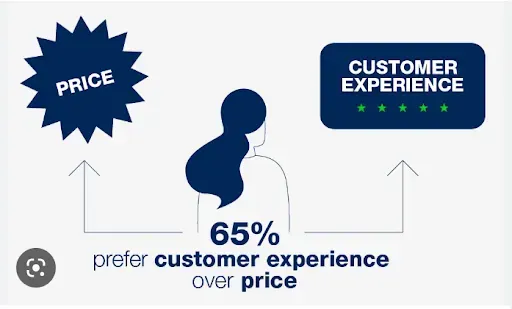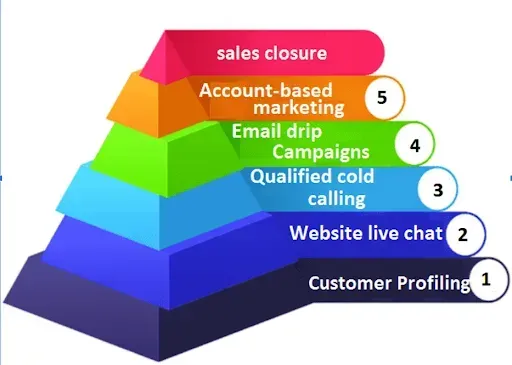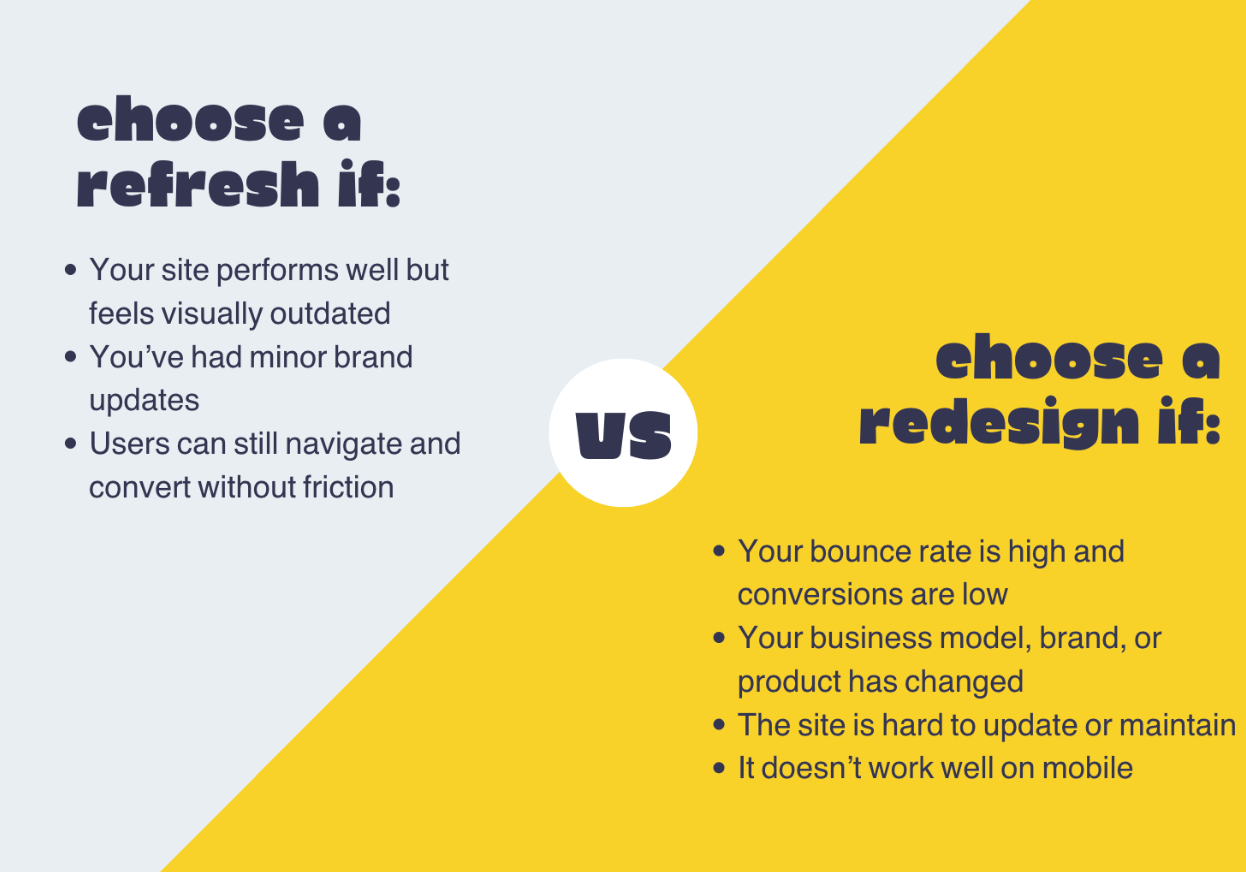Importance of Customer Experience in Today’s Business Landscape

Source: CADesignForm
Before we can move on to understanding how you can improve customer experience, it’s essential to know why it is important in the first place.
Here are some points of importance of customer experience in today’s business landscape-
- It’s a competitive market where customers have multiple expectations, personalized experience being on the top of that list of expectations. This is why every organisation is focused on installing one or the other type of CRM.
- Customer experience is ranked as the #1 factor in building customer trust and loyalty with a company.
- Customer experience is a direct pathway to business success. The better the experiences you offer to your customers, the more they will keep coming back to you.
So, customer experience aligns with business success and profitability which makes it essential to focus on it. The need for you is to understand customer pain points and work directly on resolving them by coming up with practical and useful products, services, and solutions.
Once you do that, the customers will get more interactive with you and you can work on customer experiences, constantly improving them.
Role of Pre-sales in Shaping Customer Experience
Pre-sales teams are the first point of contact between a company and its potential customers. So, the customer journey begins at that stage and it is essential to offer a phenomenal experience here, because, obviously, first impressions matter.
So, pre sales teams play the most prominent role in shaping customer experience in the following ways-
- Attend to the customers efficiently to create a positive impression from the beginning of the customer journey.
- Create positive connection and interaction with the customers thereby leaving a lasting impact on them.
- Understanding the customer needs and demands in the early stages of the buyer journey and offering them exactly what they’re looking for.
- Setting the stage for final sale and building customer trust and loyalty for the long-term.
Steps to Improving Customer Experience Through Pre Sales
Pre-sales has the major role to play in shaping customer experience. If you shape customer experience during pre-sales, you positively move towards the path of driving more sales to your business. However, when you’re working on customer experience, you need to know how exactly you can improve it.
Hereinbelow are the different steps to improving customer experience through pre-sales.
Identifying Customer Needs and Pain Points
A deep understanding of the customer’s needs and pain points is essential for pre-sales teams. It’s only when you understand the customer pain points that you’re able to deliver them what they’re looking for. So, studying customer behavior and focusing on their needs is imperative.
You can do that through-
- Market research
- Customer feedback and interactions
- Surveys
- Organizational sales analytics and performance reports
Conducting Market Research
We can consider this step as a part of the first step itself. Market research gives deep insights into what’s trending, what the competition is doing, and where the customers are going. These insights in turn help you plan your pre-sales strategies.
You can perform the market research through the following activities-
- Surveys and feedback forms
- Brainstorming with your teams and talking about latest market trends
- Using insights from market statistics and analytics
Developing a Customer-Centric Pre-sales Strategy
Once you have got the relevant information about your customer needs and preferences through your research, you must start preparing a pre-sales strategy. It’s essential that your pre-sales strategy revolves around the basic needs of the customers.
You need to identify the key areas that are customer centric. This helps demonstrate the value of offerings and build a relationship with the customer on mutual understanding, trust, and a shared focus on the customer’s needs and goals.
Identifying Areas of Impact
Pre-sales teams should identify the areas where they can have the biggest impact on customer experience. This can be achieved by focusing on product demonstrations, proposals, and presentations.
These activities should be designed to meet the customer’s specific needs and demonstrate the offering’s value. By focusing on these areas, pre-sales teams can deliver a more positive customer experience and increase the chances of closing a sale. This approach shows the customer that the company values their needs and is dedicated to providing a solution that meets their requirements.
Aligning Pre-sales Activities with Customer Experience Goals

Source: Livprop
Pre-sales activities refer to the actions taken by a company before a sale is made, such as product demonstrations and customer presentations. Aligning pre-sales activities with the overall customer experience goals helps to ensure that pre-sales teams are working towards the same objectives as the rest of the organisation.
This helps ensure that customer experience is consistent across all touchpoints and that pre-sales teams contribute to the overall customer experience. By doing so, the pre-sales team can provide relevant and helpful information and create a seamless customer experience from the first touchpoint to the sale. This helps build trust and confidence in the company and increases the likelihood of customer loyalty and repeat business.
Training Key Pre-sales Personnel
Training key pre-sales personnel on customer experience best practices helps them understand the importance of delivering a positive customer experience. It provides them with the skills they need to do so effectively.
This training should include topics such as
- Active listening: Active listening involves paying close attention to what the customer is saying. It demonstrating that you understand their needs and concerns, and responding appropriately.
- Empathy: Empathy is another important skill. It helps pre-sales personnel understand the customer’s perspective. It also helps to respond in a way that is helpful and understanding.
- Problem-solving: Problem-solving skills are also important. They enable pre-sales personnel to quickly and effectively resolve customer issues. It ensures a positive experience for the customer.
By equipping pre-sales personnel with these skills, they can effectively engage with customers and deliver a more positive customer experience.
Measuring and Analyzing Pre-sales Performance
Measuring and analysing pre-sales performance involves tracking and evaluating key metrics related to the pre-sales process, such as the number of opportunities generated, conversion rates, customer satisfaction scores, and average deal size. This information provides valuable insights into the effectiveness of the pre-sales strategy and the performance of individual pre-sales team members.
By regularly reviewing this data, organisations can identify areas where improvements can be made, such as by increasing the number of qualified leads, improving conversion rates, or enhancing the customer experience. This information can then be used to adjust the pre-sales strategy. This may involve changes to the sales process, training and development for pre-sales team members, or the marketing and sales collateral used to support pre-sales efforts.
Establishing Metrics to Measure Pre-sales Performance and Customer Experience
To effectively measure pre-sales performance and customer experience, pre-sales teams should establish metrics. These metrics should be specific, measurable, and aligned with the overall customer experience goals. Metrics such as customer satisfaction, engagement, and retention can be used to measure pre-sales performance and the impact on customer experience.
Analysing Data
Data analysis is a critical part of pre-sales best practices. By analysing customer feedback, pre-sales performance, and market trends, pre-sales teams can identify areas for improvement and make adjustments to the pre-sales strategy as needed. This helps to ensure that they are delivering a positive customer experience and driving better business results.
Based on the results of data analysis, pre-sales teams can make adjustments to their pre-sales strategy as needed. This can include changes to product demonstrations, proposals, and presentations, as well as changes to the overall customer experience approach. By continuously refining their pre-sales strategy, pre-sales teams can deliver a better customer experience and drive better business results.
Are You Ready to Deliver the Most Amazing Customer Experiences?
Pre-sales teams play a crucial role in improving customer experience. They set the stage for a positive customer experience and shape the perception of the company from the first point of contact.
To deliver the best possible customer experience, pre-sales teams must first understand the needs and pain points of their potential customers through active listening and market research. They then develop a customer-centric pre-sales strategy and align their activities with overall customer experience goals.
Pre-sales personnel must be trained on customer experience best practices and performance. It must be measured and analyzed regularly to identify areas for improvement. By focusing on these key steps, pre-sales teams can drive better business results and it can deliver a positive customer experience that helps to establish lasting relationships with customers.
Now that you understand the importance of pre-sales in improving customer experience, it’s time to take action!
Embrace the best practices outlined in the article and start making a positive impact on your customers today. The time to take your customer experience to the next level is now.
Author’s Bio: Shweta is a growth marketing specialist who is working with 2xSaS. She creates content that converts website visitors into paying customers for SaaS companies. In her free time, she likes driving around the city & hanging out with her friends.
Email: Shweta@2xsas.com



















